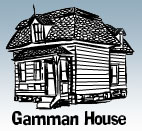


THE SHINERS' WAR
The 'Shiner's War' grew out of the terrible frustration felt by the Catholic Irish of Bytown in the early 19th century. The wealthier and more powerful British and Scottish communities considered the Irish as the very lowest members of the social order because of their own historical prejudices and the refusal of the Irish to assimilate. The oppression they suffered eventually pushed the Irish into violent resistance.
The Irish Catholics of Bytown were given the name 'Shiners.' Historian Michael Cross offers various possible explanations for the source of the name:
"The Shiners were Irish immigrants who, for the most part, worked in timber camps and river drives. The name has variously been described as a corruption of the French 'cheneur,' or cutter of oak; or as a self-designation meaning they were to 'shine' above others; or as a nickname derived from the shiny silk hats worn by greenhorns arriving in Bytown; or as coming from the newly-minted half-crown coins with which timberers were paid."
The Shiners were organized into a powerful force by a Protestant Irish timber baron named Peter Aylen. He was rumoured to have made his way to the region after 'jumping ship' at Quebec, and became involved in the early wood industry around 1816. Aylen's desire to organize the Catholic Irish, who were immigrating to Canada in large numbers, was fuelled by his ambition for greater control over the Ottawa Valley. To encourage their loyalty, he only hired workers from their community and provided them with food, drink, and women at his estate. He was one of the few Bytowners who treated the Shiners with any kind of respect, and it won him their allegiance.
In the spring of 1835, the Irish, under the direction of Aylen, started a war against French woodsmen, making them the scapegoats for Irish poverty. The French, who had been working for many years in the Ottawa Valley's forests held most of the high paying jobs in timber. Aylen directed the Shiners to drive the French from the region so that they could take their jobs and demand higher wages. This scheme benefited Aylen, since most of his competitors hired French workers and the disruption of their operations served his interests.
Violence was common for the next two years, both in the streets of Bytown and throughout the Valley, creating a state of fear in the community. The Shiners constantly attacked the French and eventually stopped many from entering the forests. Protestant Irish farmers were also targets of assaults by Shiners. Anyone perceived to be in their way was dealt with violently.
In August of 1835, the Shiners and their benefactor started to challenge the political institutions controlled by the "establishment." The Bathurst District Agricultural Society was their first target: Aylen and gang of Shiners crashed their annual meeting. Surrounded by a large number of violent supporters, Aylen had little difficulty controlling the vote for the executive and was promptly elected President.
The campaign's next step came in January 1837, with Aylen attempting to take control of the annual Nepean Township meeting by employing the same tactics he had used at the Agricultural Society. This proposed coup was met by strong resistance from the Council and townspeople in attendance; the meeting dissolved in chaos.
As long as Aylen and his Shiners were attacking French Catholics, a group only slightly less despised by the British and Scots than the Irish Catholics themselves, his campaign of violence did not generate concerted opposition. His attempt to take serious political power from those same elites was a very different matter, however, and resistance was swift and decisive. Violence was met with violence and Aylen's timber rafts had a great deal of difficulty reaching Montreal. His business interests were seriously damaged.
Aylen left Bytown, crossing the river to live in Aylmer and ultimately becoming a respected member of the community there. Without his leadership, the Shiners lost both their organized structure and their influence in Bytown. Unfortunately, the violence of the Shiners War generated hatreds and widened divisions within the various ethnic and cultural communities of the town that continued to echo through Ottawa's history well into the 20th Century.
For more information please see:
Cross, Michael (1973) "The Shiners's War: Social Violence in the Ottawa Valley in the 1830s," The Canadian Historical Review, Vol. LIV, No. 1, March.